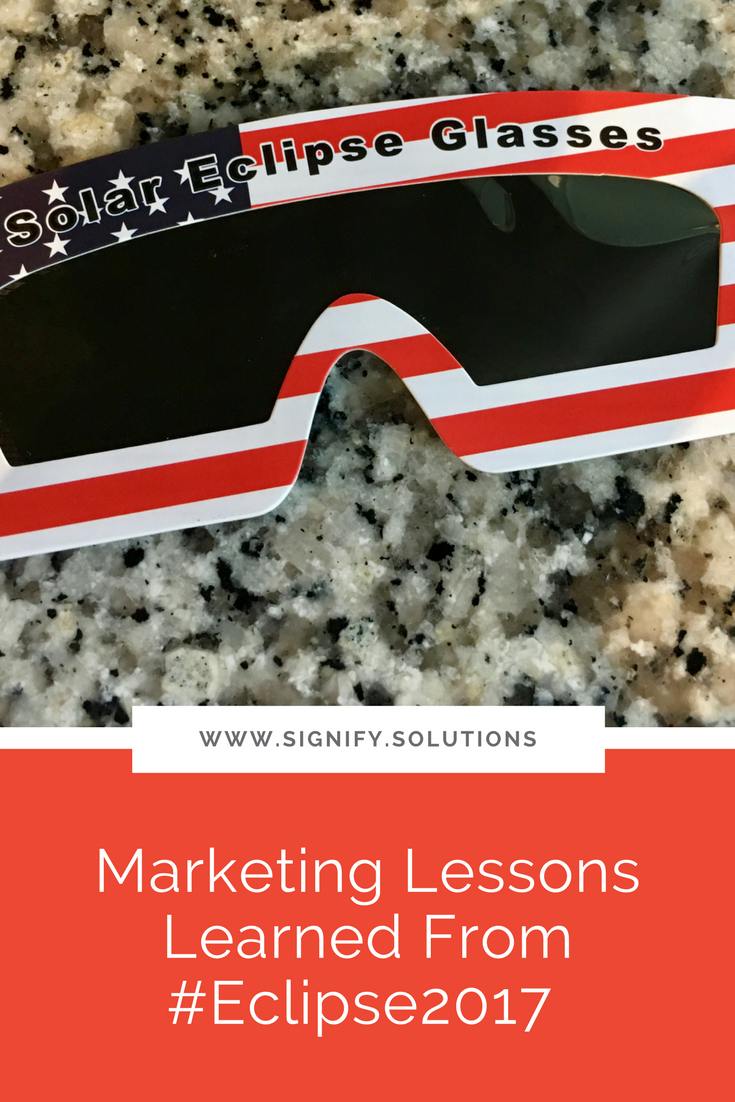Do you watch other nonprofits and social enterprises launch their campaigns, products, or events to great success, and then wonder what it took to make that happen? Do you assume it's beyond your capability?
While it is incredibly helpful to have more money and manpower behind your launch, the truth is that many of them share a lot of commonalities. And there are a number of tactics that you can use whether you're a solopreneur or a team to make your next launch your best yet.
This is really good news because it means that there's hope for all us little guys! So, allow me to give you a shortcut to what works for some of the big dogs.
(By the way, before we get started, this post is based on the assumption that your product, service, campaign, event, etc. has already been "vetted." Meaning, we're assuming that it's something people want.)
Let's continue . . .
(PSST—This is part two of a series. Read Part 1 and Part 3.)
Begin With A Launch Plan
This is the not-so-dead horse that I will continually beat on this blog, and in any conversation that you and I ever have. You'll also see it woven into a lot of the items below too for good reason. Successful launches don't just happen unless your nonprofit or social enterprise has an enormous audience or tremendous amount of influence. And how many of us do? Planning includes the details, tasks, and, yes, even the right headspace.
At the very least, be sure to write you plan down. The list-maker in me would love to see your timelines too, because I think organization is a key to success. But push yourself to at least be more organized than you were the last time.
Don't just let all the ideas float around in your head. I'm guilty of that because I'm naturally an organized person. But it's incredibly helpful to see everything laid out in front of you, whether it's on paper, on a Word or Google doc, in Evernote, or a project management system. (I'm currently loving Asana.)
Simply creating some sort of plan will make you feel so much better about your launch.
You Time To Make a Launch Happen
Launches take a lot of time and energy. It doesn't matter if it's for a fundraising or awareness campaign, book, event, course, or other type of product.
Chances are that you already have a full calendar. So, it's important to make space in your schedule as you're preparing for a launch of any kind. Either get some work out of the way prior to the launch time period, or start weeding out tasks that can wait until after the launch.
You may need to work longer hours to prepare for your launch, just to ensure your day-to-day responsibilities get taken care of when you're attention is focused on the launch. Not a fun thing to think about, but remember, it's only for a short time.
The other option is to move items off your plate. This can be done through delegating, reassigning, nixing it, or putting it off to a later date. Sadly, most of us live our lives in response to either the urgent or shiny object syndrome.
But people who plan successful launches know that they are focused on making the launch a priority.
Don’t Forget: Plenty of Preparation
Not too far off track from the items above, launches take special preparation. It may mean author interviews, gathering testimonials, selecting a location, writing emails, scheduling social media, or any other number of To Do's. These tasks can feel never-ending.
The point is that launches aren't to be taken lightly. You'll need not only the space in your calendar, but all your ducks in a row. It's highly unusual to launch last-minute and make it a success, unless every waking moment is dedicated to that project, the goals are small, or there is a team of people that can help pull it off.
Think farther out. Your launch may be six or 12 months away, but what can you start doing right now to make it a success? (If it’s a big launch, you’ll need all of those months anyway.)
Communicate Both Head and Heart Information
I don't have to tell you that people learn in different ways. So, unless you are talking to an incredibly niched and small group of people (like vegan, Tabby cat lovers who only wear purple on Thursdays and have a side photography business) you'll need to communicate your message in multiple ways.
Usually, this is done not only by having both visual and written content, but also by speaking to both the head and the heart.
Plus, we are all multi-faceted individuals, and what might resonate with us on one day could change the next.
Because I work around the social justice space, statistics are thrown around quite frequently. And while stats can be compelling, most people really need to see the faces behind the numbers to make it real for them.
So, definitely include the facts and figures that make your cause unique and worthy, but don't forget the stories. You'll probably need both of these things to make the sale or donation.
Use A Variety of Communication Means and Methods
Circa 1990, we were just delighted to get a plain text email in our newly minted Inbox. Boy, how times have changed! (And frankly, some of you reading this weren't even alive then to remember! I feel incredibly old all of the sudden . . . )
Now, just to be heard, you need to talk to people in a variety of different ways to get their attention. At the very least this means email and social media. But, as you already know, there are lots of other fancy techniques you can try as well.
While this isn't groundbreaking information, the marketing problem I see with too many cause-focused organizations is that they just send one or two emails and post once or twice on social media, and then sit back and expect they've done their best. But, guys, that's juts not going to cut it.
Your launch marketing emails need to be set up as a series of emails that build on one another.
And in social media world, you need to consider ever-changing algorithms and short life spans. I've heard that the average Facebook post has about a two-hour shelf life, and Tweets are only 18 minutes! If you don't have money for advertising, to keep it in front of people whether they want to see it or not, you need to be posting much more frequently.
This doesn't even take into account people's good intentions. If you only send one email a few weeks before your book launches or your event tickets go on sale, for example, it's going to dog-piled by hundreds of other emails. Then, it just ends up as something someone once wanted to take advantage of, but never got around to.
Stay top-of-mind by showing up repeatedly wherever they happen to be, either in-person or online.
And I mentioned this above, but you also need to make sure you're incorporating text, video, and images into whatever is going out ,when possible. Some people are more visual and some prefer to read (me!). Keep in mind that social media platforms are also giving more preference to images—and especially video—right now, which means that they'll show your content to more people.
I know this can be overwhelming! However, the good news is that we live in an age where there are a lot of DIY tools to do things on the cheap. If you can't pay for it, take the time to learn a new skill you can implement into your next launch to ensure more people see your message.
(Side note: A giveaway would also fall under this category. People love winning things, and it creates a buzz!)
Get Launch Marketing Help for Your Nonprofit or Social Enterprise
Successful launches are never a one-man (or woman) show.
Even if no one is helping you promote, you may still need advice from others, or to pay to get graphics done, or have an intern that helps create and schedule content. I know a few unicorns who have an unbelievable amount of skills, and can function pretty autonomously, but even they can't do it all.
Outside of getting help for your launch, public relations is another worthy addition. This may come in the form of setting up guest blog posts or podcast interviews, Instagram takeovers, being featured in magazines or on blogs, speaking gigs, and things like that. These are free opportunities that showcase you, your nonprofit or social impact company, your cause, or your launch specifically.
The trick here comes back to preparation. Some of these need to be scheduled months in advance. Start making a list of places you'd like to be featured so that you don't have to scramble when you're ready to take this step.
And another vital piece to the successful launch process is word-of-mouth. This may be by friends and family, co-workers and staff, or sponsorships and partnerships. If you can get more people to talk about you, the wider your news will spread.
You may need to tell them exactly what to say, create social sharing buttons, or be okay with them winging it in their own words. But always make it easy for them.
Anything Extra You Can Include?
Depending on your type of launch (book, event, product, fundraising or awareness campaign, etc), you may also want to consider other types of add-ons, extras, or bonuses that will help you get your message across. Here are a few ideas:
Meet ups
Posters/flyers in local businesses
Conference, event, or trade show booths
Kick off and celebration events (ex: book signing or launch party)
Affiliate links for sales
What's helped make your launch a success? I'd love to hear!
(PSST—This is part two of a series. Read Part 1 and Part 3. And if you’re ready to take it to the next level, check out my launch strategy guide, Promote With Purpose.)
PIN THIS POST FOR LATER:
I'm Kristi Porter, and I started Signify to provide writing, consulting and strategy services to nonprofits and for-profit organizations with a social mission, primarily through copywriting, marketing and business communications. I believe that cause-focused organizations like yours are the future of business. You're proof that companies can both make money and do good. And I'm here to help you get noticed and grow. When you succeed, we all win.






































